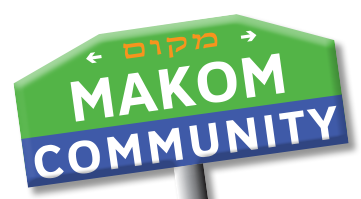What do you think of when you imagine change? Chaos? Growth? Improvement? Discomfort? Stress? Resistance? Excitement? Change is personal and always accompanied by some amount of loss, which can make it really tough! In our January Jewish Placemaking Accelerator seminar, we explored how to effectively come at change to make it a little easier to manage.
We started with a recap of what our fabulous accelerator participants have tried since the last seminar:
- Reverse design made curriculum work more digestible. It helped me have a clearer understanding of next steps.
- After last seminar I was able to really grapple with lesson planning stuff for the 20 minute segments of my programming. I was focusing on the deep learning I wanted my students to do and also active ways for them to participate for those 20 minutes. Shifting my focus from imparting information to lifelong application helped me feel so much calmer about lesson planning!
Then we asked three participants to share their personal Jewish education rants – what’s frustrating them about Jewish education right now? What’s pushing them in this work? What feels like it’s getting in the way? Here are those thoughts:
- We are given an extraordinary, impossible task. Hebrew schools are trying to impart real connection to kids in very little time with very busy teachers who don’t necessarily have relevant training (ex: volunteering parents). How can we expect students to engage deeply if the people who are teaching are maybe one step ahead of them in the learning and don’t have training or time to commit to putting in the work to planning for students?
- My rant is about what motivates me to do teen programming. Respect the young people! Accept that maybe they care about being Jewish and it looks different from how older folks expect it to. Teen engagement seems centered around fear that they’ll go to college, face antisemitism, and abandon Judaism. We don’t treat them as real people with respect for their minds and abilities to engage with material in a thoughtful way.
- Parents! Paying money to send kids to Hebrew school and then the kids don’t show up! Sports and other extracurricular activities always take precedence over the Jewish education. Hebrew school seems like the last priority. So why are you bothering?! Hebrew school always loses out whenever there’s a schedule conflict. It’s demoralizing as a teacher to put real work into planning something great and then kids don’t show up.
So what can we do about all of that? We walked our participants through a set of steps to creating and managing change that’s long-lasting, sustainable, and has a big impact. We created a change management process tool, a flowchart showing how and when directors and teachers work alongside each other and together to create change.
The first step is noticing a problem or asking a question. That’s what each of our three participants did a the beginning of our seminar time together: the problem is too little time and too few resources for our teachers; the problem is engaging with teens from a place of fear rather than a place of respect; the problem is parents saying they want their kids in Hebrew school and then consistently deprioritizing it.
The next step involves a lot of listening and empathy. Directors need to listen to teachers, students, parents, lay leaders, board members, and clergy. Find out how they feel about Hebrew school and the perceived problem. Collect data from all that listening.
Then, use that data to create a vision: how will the world be different because we’re doing this work? Once an organization or institution figures out its vision, the challenge is to work backward from that idea to steps that are small enough to implement to start turning that vision into a reality. Directors and teachers can work together to come up with goals based on the vision, steps to start achieving those goals, a plan to evaluate and assess how it’s going, and a plan to tell the story of the process.
We invited participants to get started on this process. We broke into groups by synagogue and began brainstorming some ideas for visions and goals. Participants closed out the seminar by commenting in our Facebook group about their plans for the coming weeks.
- Continuing conversations with ed directors and clergy
- Sharing visions
- Starting empathy interviews
- Meetings to discuss next steps in vision implementation
We’re excited to hear how all this empathy work and visioning is going at our next seminar in January. There we’ll unpack managing, working in, and creating synagogue culture to support our visions and changes. That process also starts with lots of listening!
